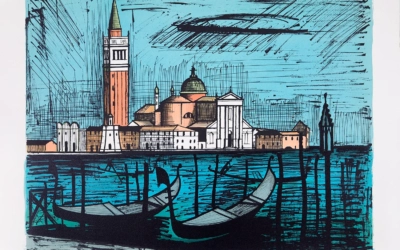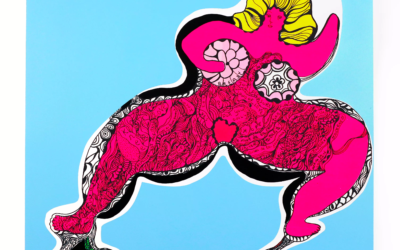
Signature of the exhibition catalog by the artist
Saturday, November 19, 2022, from 3:00 pm to 6:00 pm
As part of PhotoSaintGermain, Galerie d'art Arenthon in Paris has invited architect and photographer Emmanuel Biard to present his "Nocturne" series, in dialogue with engravings by Hans Bellmer and Stanley William Hayter.
Each year since 2020, the Galerie has invited a contemporary photographer to exhibit his or her work alongside prints chosen from its collection of modern works. In addition to the opportunity to introduce printmaking to photography enthusiasts, this exchange creates stimulating and joyful bridges between these two practices of creating multiples on paper.
It is with humility that we attempt this year to bring the work of photographer and architect Emmanuel Biard into dialogue with the engravings of Stanley William Hayter and Hans Bellmer. Indeed, this is Biard's first solo exhibition and he is already confronting the works of major 20th century artists.
The choice of engravings in dialogue with the photographs ofEmmanuel Biard was made intuitively. The formal link seemed obvious to us: the vegetal lines of the photographs responded to the undulating lines of Hayter's engravings, the precision of the architect echoed the virtuoso line of Bellmer, an industrial designer by training, the deep blacks and shades of gray of the photographs responded to the transparencies and intensities of Hayter's black engravings, the eroticism of Bellmer revealed the strange sensuality of Biard's images. But as always, intuition reveals a forest of hidden connections, which emerge as we delve into each other's work.
Lost in this darkness
Emmanuel Biard is an architect and discovered film photography during his studies. During a workshop led by Antoine d'Agata in Arles in 2016, Biard experimented for the first time with night photography, in digital and with flash. He discovered another way of producing images. Since then, he has been developing his Nocturne series, which brings together shots taken at night, almost blind, deliberately underexposed, with the depth of field reduced to a minimum, the background remaining in darkness and leaving only the closest elements to be revealed in the incisive light of the flash.
In his nocturnal wanderings, the photographer allows instinct to operate, the happy apparition to take place. And through the mastery of his technique, he captures representations of the invisible and of a manifested interior landscape1. The fantasy slips into the darkness, into the velvety blacks, the blurs or the chiseled details. The entirety of the subject is concealed, the better to desire it. The depth of the night can seem threatening here, until the abandonment, the acceptance of a hidden reality.
A disturbing strangeness
Emmanuel Biard 's photographs evoke this feeling ofdisquieting strangeness, defined by Freud in his essay Das Unheimliche in 19192 and studied at length by Hans Bellmer3: this troubling, almost frightening feeling of a known and yet foreign universe, which evokes the return to the surface of the buried ; an emergence of the intimate, of the depths of the night and of dreams.
For Hans Bellmer, it is first of all the creation of his Doll and the numerous photographs in which he will stage it, which awakens this feeling of uneasiness. In his engravings, derived from his numerous drawings, the intertwining of dry lines and voluptuous curves sketches an object-subject suddenly transforming into another, creating visual and poetic anagrams that invoke this strangefamiliarity4. For Hans Bellmer, engraving brings sensuality to the drawing, by creating a relief effect on the paper through the printing of the grooves5. The interweaving of architecture and flesh, of the constructed and the organic, makes the body a landscape to be explored, a territory conducive to the emergence of the unconscious, the fantasy, the destruction.
The intuitive gesture
Like Hans Bellmer, his contemporary, Stanley William Hayter is close to the surrealist group. For him, the technique of engraving is entirely at the service of the emergence of the unconscious in his creations, beyond a simple means of reproduction. Experimentation and pedagogy are at the heart of his life as an artist: in 1927 he founded the famous Atelier 17, where he transmitted the art of engraving to the greatest artists of the time (Picasso, Giacometti, Miró, Ernst, Tanguy, Dalí, Viera Da Silva, Chagall or Motherwell, Rothko, Pollock during his American period).
If in Bellmer 's work the line seems controlled, in Hayter's it is liberated, organic, visceral and tends towards abstraction (which he will fully embrace from the 1940s)6. The involvement of the body and the movement reveal the imaginary and the unconscious. The forms seem to emerge from his inner night, angels fight, wild horses rearing up... Just like Biard's gesture of photographing in the dark, Hayter 's is instinctive. The artist adopts a posture of abandonment to creation: thanks to a perfect mastery of the technique, he can free himself from it and create a purely intuitive engraving.
Through different approaches, the production of the image is for Hayter, Bellmer or Biard, as much an exercise of introspection as of externalization, giving to see a tension between interior impulse and creative release.
Catherine Tanazacq
___________________
[1] The link with the work of the blind photographer Evgen Bavčar seems obvious to us, although Emmanuel Biard does not know his work. See Evgen Bavčar, Le voyeur absolu, 1991, Ed. Seuil, Paris.
[2] Sigmund Freud, The disturbing strangeness and other essays, translation by Marie Bonaparte, Gallimard, coll. Folio essais, Paris, 1988.
[3] See Fabrice Flahutez, Ce que cache l'image, ce que montre la Poupée, Paris, 2005. [On line].
[4] Das Unheimliche is translated by François Roustang as étrange familiarité, Nouvelle Revue de Psychanalyse n°14, 1976, pp. 85-116.
[5] See Fabrice Flahutez, "Hans Bellmer : l'anagramme et l'estampe au service d'un rêve surréaliste", Histoire de l'art n°52, 2003, pp. 79-94. [Online].
[6] See Anne Béchard-Léauté and Laurence Tuot, "Stanley William Hayter: Les nouveaux gestes de la gravure", Interfaces n°39, 2018. [Online].
Discover the works in the exhibition
-

Back
Emmanuel Biard
350€
-

Poison I
Emmanuel Biard
350€
-
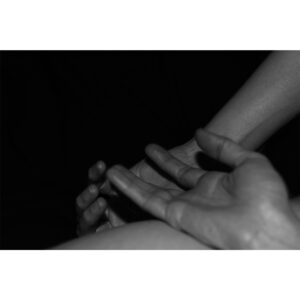
Hands
Emmanuel Biard
350€
-

Night II (inset)
Emmanuel Biard
650€
-

Tamaris
Emmanuel Biard
450€
-

Majorelle I
Emmanuel Biard
450€
-

Night I
Emmanuel Biard
450€
-

Night II
Emmanuel Biard
450€
-

Edge I
Emmanuel Biard
450€
-

Undergrowth
Emmanuel Biard
450€
-

Ginkgo biloba
Emmanuel Biard
450€
-
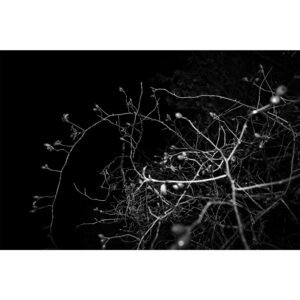
Rosehip
Emmanuel Biard
550€
-

In "Dialogues" F
Hans Bellmer
SOLD
-

Incest
Hans Bellmer
600€
-

The fire
Hans Bellmer
SOLD
-

The wasteland
Hans Bellmer
SOLD
-
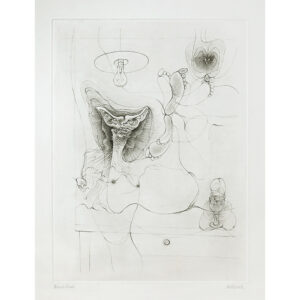
Madame is served
Hans Bellmer
650€
-

Prenatal underground
Hans Bellmer
600€
-
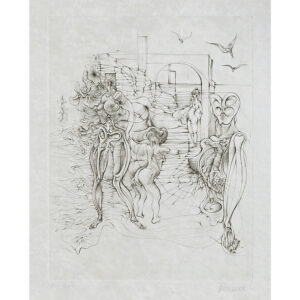
Nude and seagulls
Hans Bellmer
550€
-

Catalog of the exhibition "Nocturne
Emmanuel Biard
15€
-
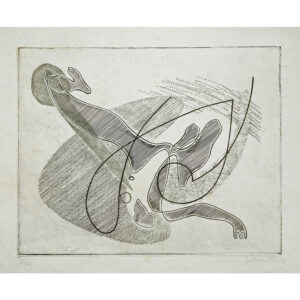
Murder
Simon William Hayter
2 300€
-

Characters threatened by flame
Stanley William Hayter
2 300€
-
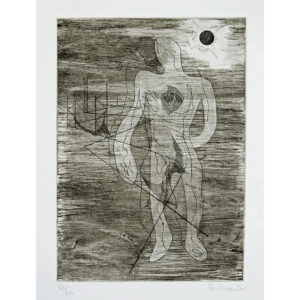
Plate I for the Apocalypse
Stanley William Hayter
1 300€
-

Panel III for the Apocalypse
Stanley William Hayter
RESERVED
-
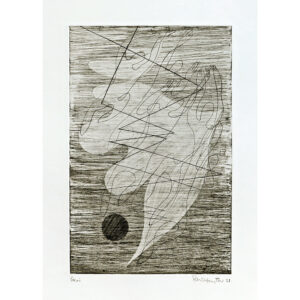
Panel V for the Apocalypse
Stanley William Hayter
1 300€
-
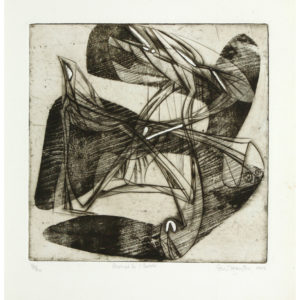
Insect prestige
Stanley William Hayter
3 800€
-
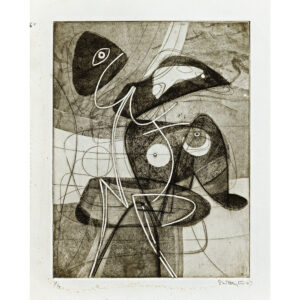
Virtual Character
Stanley William Hayter
2 000€


